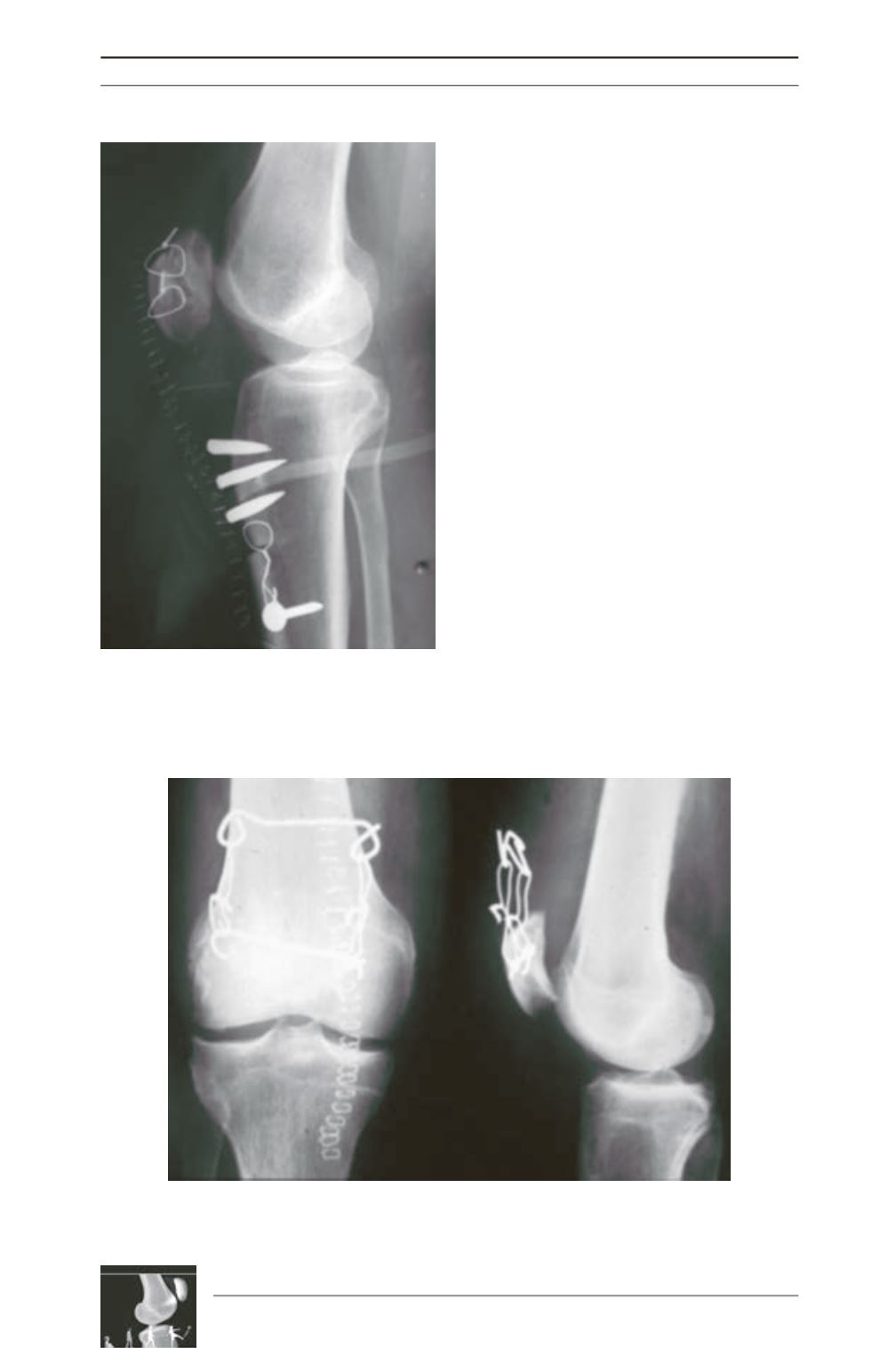

S. Lustig, R.A. Magnussen, G. Demey, E. Servien, P. Neyret
364
Quadriceps tendon ruptures (QTRs) are
uncommon injuries that tend to occur in older
patients, those with systemic diseases, or patient
with significant degenerative change to the
tendon prior to injury. Despite relatively obvious
findings on physical examination and standard
radiographs, delay in the diagnosis of QTRs
still occurs [10]. Late repair of QTRs can be
technically demanding and the results are less
satisfactory than those expected following early
repair [11-13]. Over the past two decades, many
surgeons have recommended a period of 4 to
6 weeks of cast immobilization and 12 weeks of
bracing after repair of QTRs [11-13]. However,
several recent studies have advocated various
methods of augmenting repair of QTRs to allow
early, protected motion and full weight bearing
[14-17]. In cases of chronic rupture with a large
gap, immobile patella, and patellar tendon
scarring, a specific technique has been described
by P. Chambat using suture and metallic wire
(“sardine can” technique) (fig. 3).
This report summarizes the different techniques
available for treatment of chronic extensor
mechanism injuries and presents the results of
the late repair of patellar and quadriceps tendon
ruptures using these different techniques.
Fig. 3: Post-operative radiograph of the “sardine can” technique
for treatment of chronic quadriceps tendon ruptures described by P. Chambat.
Fig. 2: Post-operative radiograph after
a partial extensor mechanism allograft.











